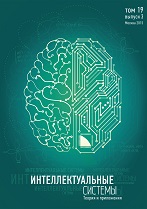|
|
Intelligent systems. Theory and applications, 2020, Volume 24, Issue 4, Pages 87–117
(Mi ista284)
|
 |
|
 |
Part 3. Mathematical models
On the minimum distance in one class of quantum LDPC codes
G. V. Kalachev, P. A. Panteleev
Lomonosov Moscow State University
Abstract:
We consider a family of quantum LDPC codes with weight-6 stabilizer generators and two logical qubits, where some logical operators have a fractal structure. These codes can be considered as local quantum codes on the $L \times L \times L$ cubic lattice with periodic boundary conditions. We prove that the minimum distance of codes from this family is bounded below by $\Omega (L^\alpha)$, where $\alpha = \log_2 (2(\sqrt{5} - 1)) \approx 1.306$.
Keywords:
quantum LDPC code, local quantum code, minimum distance, linear cellular automaton, fractal dimension.
Citation:
G. V. Kalachev, P. A. Panteleev, “On the minimum distance in one class of quantum LDPC codes”, Intelligent systems. Theory and applications, 24:4 (2020), 87–117
Linking options:
https://www.mathnet.ru/eng/ista284 https://www.mathnet.ru/eng/ista/v24/i4/p87
|

|




 Contact us:
Contact us: Terms of Use
Terms of Use
 Registration to the website
Registration to the website Logotypes
Logotypes








 Citation in format
Citation in format 